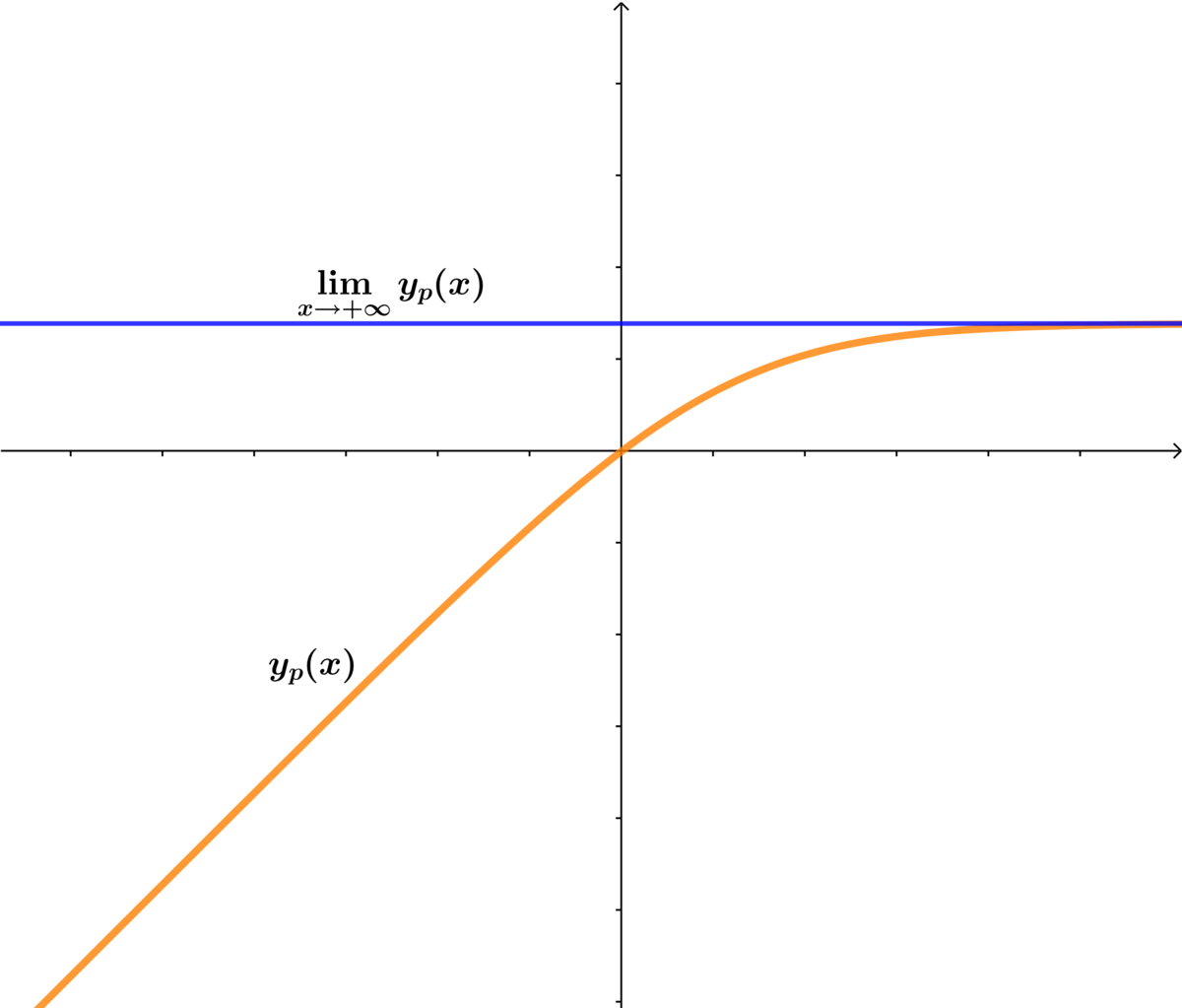A NonLinear Differential Equation.

Let , where and .
If is a solution to the above differential with the given conditions, find .
The answer is 1.386294.
This section requires Javascript.
You are seeing this because something didn't load right. We suggest you, (a) try
refreshing the page, (b) enabling javascript if it is disabled on your browser and,
finally, (c)
loading the
non-javascript version of this page
. We're sorry about the hassle.
Let z = d x d y ⟹ d x d z = d x 2 d 2 y ⟹ d x d z + z = z 2 ⟹ d x d z = z ( z − 1 ) ⟹
∫ z ( z − 1 ) d z = ∫ d x
∫ z ( z − 1 ) d z = ∫ ( z − 1 1 − z 1 ) d z = ln ( z z − 1 ) = x + C ⟹ z z − 1 = c 1 e x ⟹
z = 1 − c 1 e x 1 ⟹ d x d y = 1 − c 1 e x 1 ⟹ y = ∫ 1 − c 1 e x d x
Let u = e x ⟹ d u = e x d x ⟹ u 1 d u = d x ⟹
∫ 1 − c 1 e x d x = u ( 1 − c 1 u ) 1 d u =
u ( 1 − c 1 u ) 1 u a + 1 − c 1 u B ⟹ ( B − c 1 A ) u + A = 1 ⟹ B − c 1 A = 0 and
A = 1 ⟹ B = c 1 ⟹ y = ∫ ( u 1 + 1 − c 1 u c 1 ) d u = ln ( u ) − ln ( 1 − c 1 ) + c 2 =
ln ( 1 − c 1 u u ) + c 2 = ln ( 1 − c 1 e x e x ) + c 2
∴ y ( x ) = ln ( 1 − c 1 e x e x ) + c 2 .
Using the Initial conditions are y ( 0 ) = 0 and y ( ln ( 3 ) ) = ln ( 2 ) we have:
y ( 0 ) = 0 = ln ( 1 − c 1 1 ) + c 2 ⟹ c 2 = ln ( 1 − c 1 )
and
y ( ln ( 3 ) ) = ln ( 2 ) = ln ( 1 − 3 c 1 3 ) + ln ( 1 − c 1 ) = ln ( 1 − 3 c 1 3 − 3 c 1 ) ⟹
2 = 1 − 3 c 1 3 − 3 c 1 ⟹ 2 − 6 c 1 = 3 − 3 c 1 ⟹ c 1 = − 3 1 ⟹
c 2 = ln ( 3 4 ) ⟹ y p ( x ) = ln ( 3 + e x 4 e x )
Checking we obtain:
d x d y p = 3 + e x 3 and d x 2 d 2 y p = ( 3 + e x ) 2 − 3 e x and ( d x d y p ) 2 = ( 3 + e x ) 2 9
Substituting into the initial differential we have:
( 3 + e x ) 2 − 3 e x + 3 + e x 3 = ( 3 + e x ) 2 9 = d x 2 d 2 y p .
lim x → + ∞ y p ( x ) = lim x → + ∞ ln ( 3 + e x 4 e x ) = ln ( lim x → + ∞ 3 + e x 4 e x ) = ln ( 4 ) ≈ 1 . 3 8 6 2 9 4